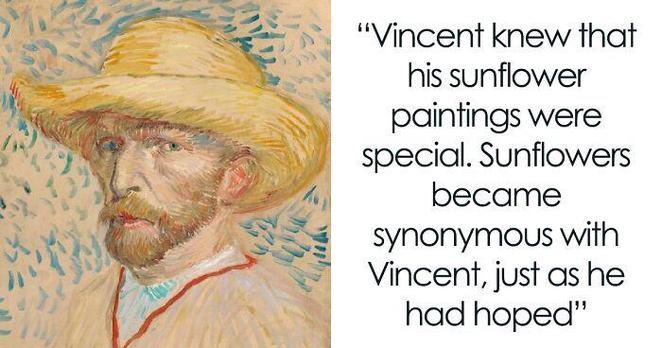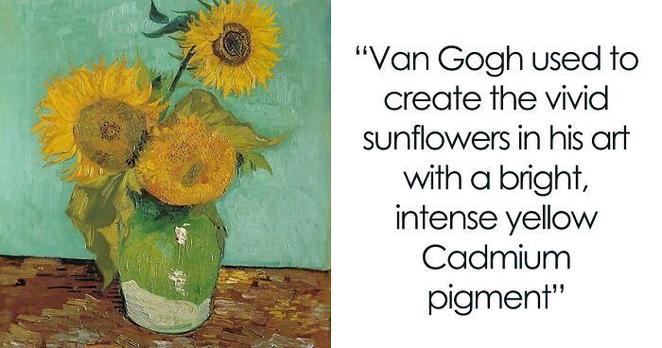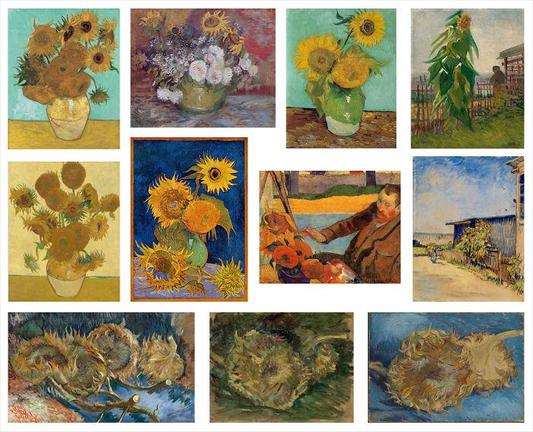17 interesting facts behind the #SunfloweryMasterpieces of #VincentVanGogh https://zorz.it/TYtyb | #EglėTenikytė #DutchPainter #PostImpressionist #GeniusOfArt #sunflowers #ContemporaryWorld #RecognizableArtworks #paintings
#PostImpressionist
Tree near a meandering river at sunset in the post-impressionist style ❤️
#illustration #tree #river #drawingposts #postimpressionist #meanderingriver #sunset #art #contemporaryart #artforsale #artist #painting #wallart #fineart #interiordesign #artbuyer #buyintoart #ayearforart #buyart #beautifulart #print #poster #riverart #landscapeart #eveningart #natureart
It’s so fine and yet so terrible to stand in front of a blank canvas.
Paul Cézanne
The Card Players by Paul Cézanne
The Card Players is a renowned series of oil paintings created by the influential French Post-Impressionist artist Paul Cézanne. These remarkable works were produced during Cézanne’s culminating period in the early 1890s, encompassing five distinctive paintings. Each version exhibits variances in size, the quantity of players depicted, and the specific environment where the card game is situated. In addition to these paintings, Cézanne meticulously executed a multitude of drawings and studies as a prelude to The Card Players series.
Card Players (5th version) (ca.1894-1895) by Paul Cezanne, oil on canvas, Musée d’Orsay (Les Joueurs de cartes,) Public domain, via Wikimedia CommonsPaul Cézanne, 1892-95, Les joueurs de carte (The Card Players), Courtauld Institute of Art, London Public domain, via Wikimedia CommonsI could paint for a hundred years, a thousand years without stopping and I would still feel as though I knew nothing.
Paul Cézanne
The Significance of The Card Players Series
The series is considered by critics to be a cornerstone of Cézanne’s art during the early-to-mid 1890s period, as well as a “prelude” to his final years, when he painted some of his most acclaimed work. This remarkable series showcases Cézanne’s mastery in capturing the nuances of human interaction and the atmospheric essence of the card game setting.
The Card Players (Les Joueurs de cartes) collection Al-Thani, Yorck Paul Cézanne, Public domain, via Wikimedia CommonsPaul Cézanne: Pioneer of Modern Art
Paul Cézanne, born on January 19, 1839, in Aix-en-Provence, France, was a pivotal figure in the transition from 19th-century Impressionism to 20th-century Cubism. Despite facing initial rejection and criticism, Cézanne’s persistent exploration of form, composition, and colour laid the foundation for modern art.
His early works were influenced by the Impressionist movement, especially after meeting Camille Pissarro and developing a close relationship with him. However, Cézanne’s style evolved, leading him to depart from pure Impressionism and pursue a more structured approach to painting.
Cézanne’s innovative use of geometric forms and distinctive brushwork set the stage for the emergence of Cubism and Fauvism. His exploration of still life, landscapes, and the renowned Mont Sainte-Victoire demonstrated an unparalleled mastery of light and perspective. His innovative approach to form, composition, and colour left an indelible mark on the development of various art movements and styles, influencing prominent artists such as Pablo Picasso, Henri Matisse, Georges Braque, Paul Klee, Amedeo Modigliani, and Diego Rivera.
Paul Cézanne passed away on October 22, 1906, in Aix-en-Provence, leaving behind a transformative body of work that continues to inspire and influence artists and art enthusiasts worldwide.
The Card Players 1890–1892 (Les Joueurs de cartes) Barnes Foundation, Paul Cézanne, Public domain, via Wikimedia CommonsThe day is coming when a single carrot, freshly observed, will set off a revolution.
Paul Cézanne
Paul Cézanne’s sentiments about his artistic achievements were complex. Despite his dedication and relentless pursuit of perfecting his craft, he often expressed feelings of inadequacy and a sense of unattained ambitions. In one notable quote, he stated, “I could paint for a hundred years, a thousand years without stopping and I would still feel as though I knew nothing.”
This declaration illustrates Cézanne’s belief that artistic mastery was an unattainable goal, regardless of the duration of his creative endeavors. His quote, “My age and health will never allow me to realize the dream of art I’ve been pursuing all my life,” further reflects his inner conflict and the persistent pursuit of an unattainable artistic ideal. These expressions reveal Cézanne’s deep introspection and the perpetual internal struggle to achieve artistic perfection.
Paul Cézanne’s profound impact on 20th-century art was acknowledged posthumously, securing his legacy as one of the most influential artists in the history of modern art.
The Card Players, 1890–1892, (Les Joueurs de cartes) Metropolitan Museum of Art, New York Paul Cézanne, Public domain, via Wikimedia CommonsMy age and health will never allow me to realize the dream of art I’ve been pursuing all my life.
Paul Cézanne
https://chasingart.com/2024/04/26/the-card-players-by-paul-cezanne/
#FridayPainting #NationalGallery #PaulCézanne #PostImpressionist #TheCardPlayers
In the course of wandering the museum until I could decently leave
I confronted a Cézanne
and felt as if a muscular hand had taken mine
and Cézanne stood beside me
grubby with clotted paint
silent in his own life
impelled by its force to record it.
– Anne Truitt, sculptor (1921–2004)
#Cézanne #Landscape #PostImpressionist #TheSea #Sunlight #AnneTruitt #Art
‘Lucie Cousturier (1876 - 1925) in her Garden’
By Maximilien Luce
A note on the back of the picture states that it is a study or ‘première pensée’ for a larger painting. Luce was born in Paris and was a pupil of Paul Signac, one of the leading Neo-Impressionists. He was also greatly influenced by Georges Seurat whose masterpiece Sunday afternoon on the Island of La Grande Jatte (Art Institute, Chicago) was at one time owned by Lucie Cousturier, the subject of Luce’s picture.
“The Docks of the Port of Bastia”, Auguste Herbin, 1907
#postimpressionist #postimpressionism #painting #fineart #landscape #fauvism
Place Vendome by Edouard Cortes #postimpressionist
Following up my Seurat post, one of my images. I like the way there is a sort of #postimpressionist rather #pointillist background, the shallow depth of field, behind the rather minimal subject in the plane of focus, the leaf and splash-circle. Made with a vintage lens. #photography #water #foliage #bokeh #johnlehetphoto #vermont
(Pigment prints available at https://www.lehet.com/photo/details/leaf_and_splash_red_yellow_foliage_reflectionsa7r2a2020_8972.html)







